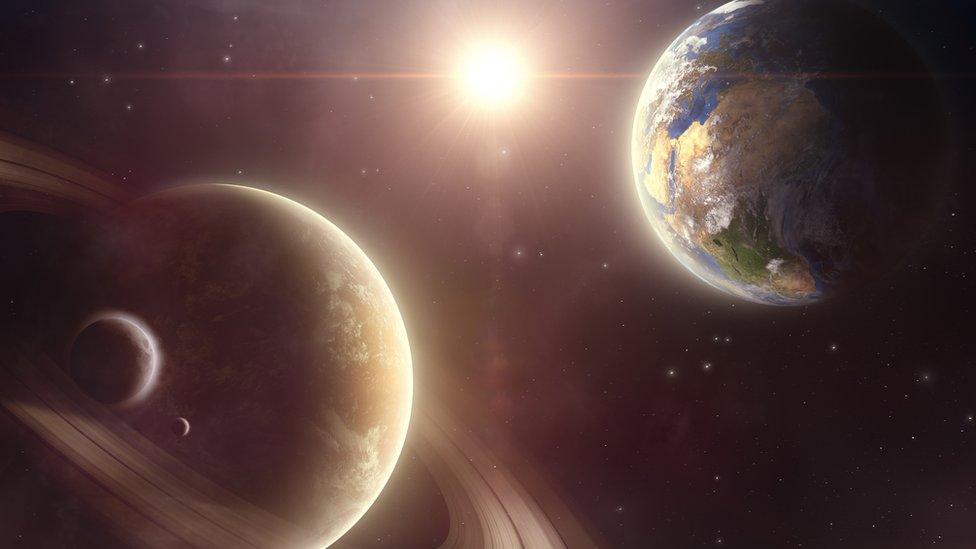Astronomy: How to see two planets and the moon in the night sky
- Published
- comments

Will you be out trying to spot the super cool trio of Saturn, Jupiter and the Moon?
This week you'll be able to see a half-lit Moon form a triangle with planets Jupiter and Saturn.
This is called a conjunction and from Thursday, October 22, the special astronomical triangle will hopefully be visible in the night sky.
Here is everything you need to know!
What is a conjunction and how can I see this one?
A conjunction is a stargazing term for when planets or other celestial bodies - objects that are natural and visible in the sky - appear as if they are next to one another when we look up from earth.
In this case, a half-lit Moon, Jupiter and Saturn will all line-up in a triangle in the night sky.
You'll be able to see this best after the sun sets on Thursday October 22.
If you start looking as soon as it gets dark, and if the sky is clear, then the illuminated Moon should be easy to spot.
Jupiter is the largest planet in our solar system at nearly 11 times the size of Earth and 317 times its mass.
As it gets a little darker, then hopefully Jupiter will be able to be seen.
Saturn is 10 times dimmer than Jupiter - because it's further away - so to catch a glimpse of the ringed planet its best to wait for it to be completely dark!
Look to the south and southwest horizon to spot the conjunction.
How close will they actually be?
They may all look as if they are close together, but that is just because you'll be looking at them from Earth.
In fact, Jupiter will be 483 million miles (778 million km) from Earth, and Saturn will be 929 million miles (1.49 billion km) away from us.
Whilst the moon will be 236,317 miles (380,316 km) from Earth.
So not really that close at all!
You don't need a telescope or fancy equipment to stargaze, just look up and keep your eyes peeled!
Will this be the only time I can see it?
Beginner's guide to astronomy
Fortunately, this isn't your only chance of seeing a conjunction.
In December, there's a rare sight on offer as Jupiter and Saturn will be at a 'great conjunction'.
The upcoming great conjunction of Jupiter and Saturn will be December 21, 2020. It'll be their closest conjunction since 1623.
What is the best way to enjoy the night sky?
You will need a clear night, with little cloud coverage and a clear horizon, so try to find somewhere away from buildings and street lights.
And although you do not need any special equipment to enjoy the sky this weekend, a pair of binoculars will help you get an even better view.
Are you interested in astronomy? Let us know if you spot the conjunction in the comments below!
- Published4 October 2019
- Published19 July 2020
- Published1 May 2020
